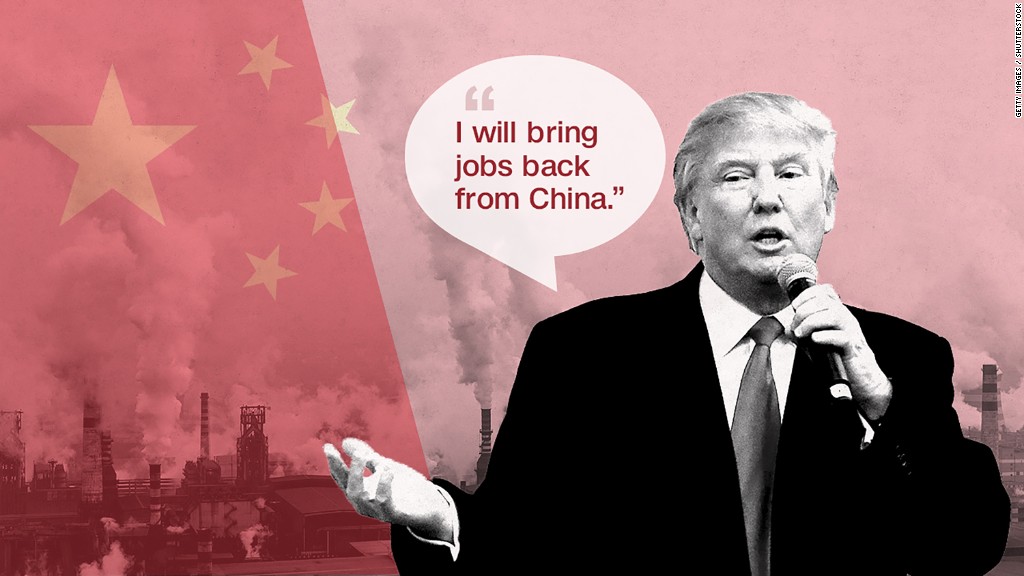
President-elect Trump keeps threatening to impose tariffs on imports to boost U.S. manufacturing.
Economists keep saying that would backfire. Trade wars would break out as other countries react with tariffs on U.S. exports.
But House Speaker Paul Ryan suggests that comprehensive tax reform with a "border adjustment tax," as proposed by House Republicans, could achieve Trump's goal minus the trade war.
A BAT would "eliminate the incentives created by our current tax system to move or locate operations outside the United States," according to the blueprint.
There's no guarantee that Trump will sign on to the idea. Nor is it clear the Senate will either. And Trump could push for both tariffs and tax reform. But political strategists believe a BAT might be included in a tax reform package.
Based on discussions with experts at the Tax Foundation, the American Action Forum, Capital Economics and EY, here's a breakdown of what a border adjustment tax is, what it's not, and how it could work.
Related: Trump taps Navarro to lead new trade council
What is a border adjustment tax?
It's not actually a tax or a tariff. It would be a fundamental change to the way the U.S. government taxes imports and exports. In a tax system with border adjustment, companies would no longer be able to deduct the cost of their imported goods, and the sales of their exports would no longer be subject to U.S. tax. That means American companies could reduce the prices for products they sell abroad.
How is a border adjustment tax different from a tariff?
A tariff affects imports. A BAT affects imports and exports.
Second, a tariff raises consumer prices. A border adjustment tax is not supposed to raise prices -- it's supposed to be neutral in its effects on trade and pricing.
Would prices go up for consumers with a BAT?
Initially, imported goods would be more expensive, and exported U.S. goods would be less expensive. But proponents of a BAT say those price changes would be fully offset by a quick rise in the value of the U.S. dollar. In other words, Americans would pay higher prices for stuff but their money would go further because the dollar would be stronger.
How would a BAT push up the value of the dollar?
When you make U.S. exports more affordable to consumers in other countries, that will drive up demand for U.S. goods. That higher demand would then make the U.S. dollar appreciate.
On the import side, a BAT makes imported goods more expensive and that reduces U.S. demand for them. That lowered demand reduces the amount of U.S. dollars available to foreign suppliers of those goods. And that scarcity of dollars would then also drive up the greenback's value.
Related: Trump mulls up to a 10% tariff on imports
Would it create more jobs in the United States?
Not necessarily. A BAT isn't intended to be a major job creator. However, the Trump team and House Republicans may sell it that way.
So why bother with a border adjustment tax?
It would make the tax system more efficient. A BAT would make it harder for U.S. companies to avoid U.S. taxes. And it would reduce the incentive to move operations abroad simply for tax purposes.
Will China and other major trading partners protest a BAT?
It's not possible to predict the political response if Congress adopts a BAT. If it's implemented in a neutral way, it would affect all imports, without regard to country or industry or type of good.
Related: Argentina tried a Trump-like tariff, and it went wrong
The case for a BAT - and its major risk
The major assumption of a BAT is that prices in America effectively would not go up because the dollar's rising value would offset the increased cost of imports.
But there is also a major risk: If the dollar does not strengthen enough as expected, the price of consumer goods would go up. And that would hurt working Americans.


